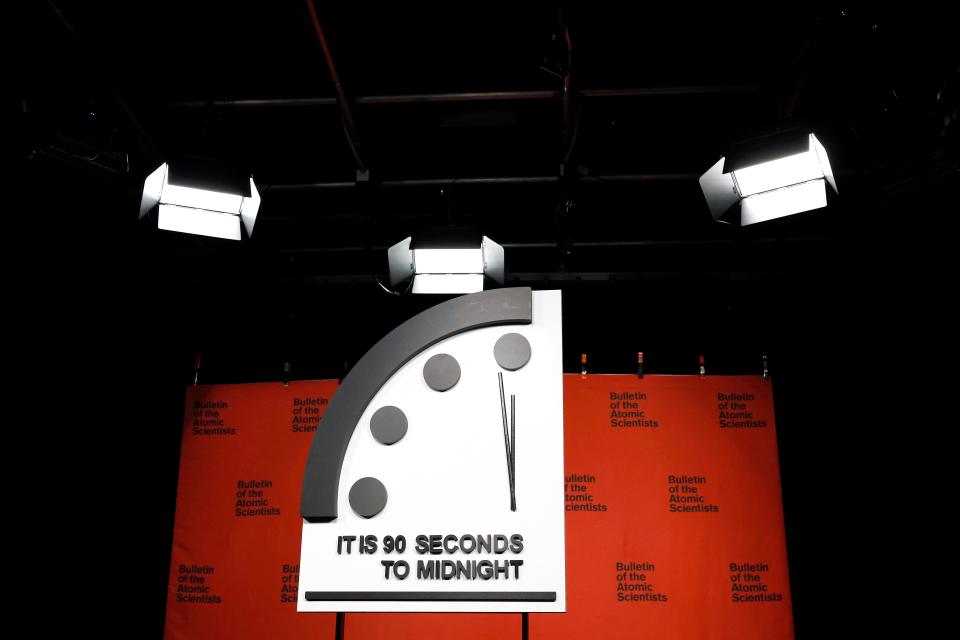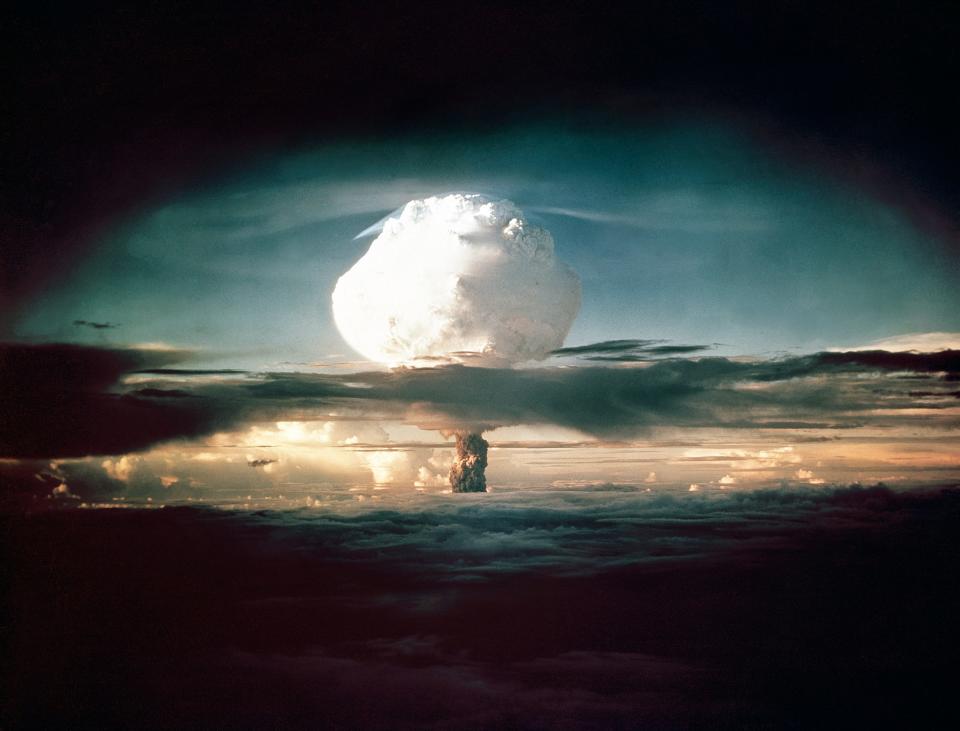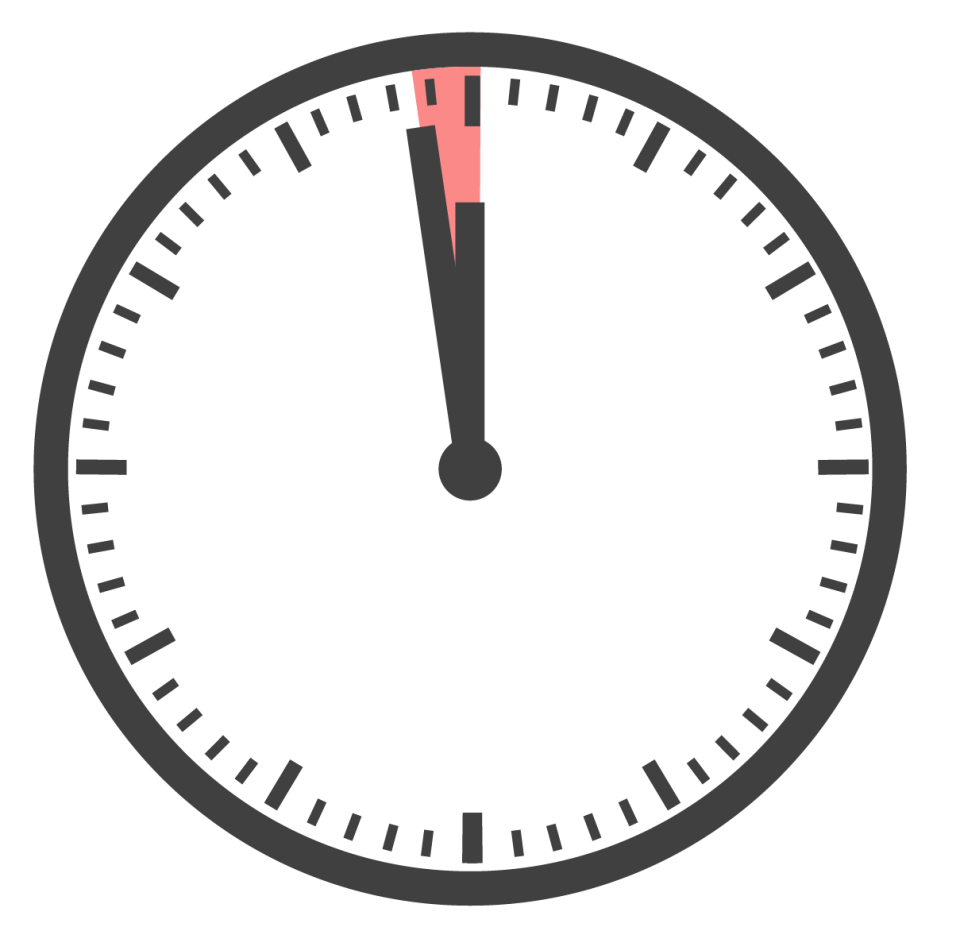Scientists to deliver a warning about nuclear war with Doomsday Clock 2024 announcement
It's almost that time again: Time for the annual update of the Doomsday Clock, the symbol of how close the world is to civilization-ending catastrophe.
First set in 1947, the Doomsday Clock warns humanity about how close – or far – we are to destroying our world with our own dangerous technologies. "It is a metaphor, a reminder of the perils we must address if we are to survive on the planet," according to the Bulletin of the Atomic Scientists, which sets the symbolic time each January.
In recent years, the clock's settings have mostly reflected the risk of nuclear war and the dangers of uncontrolled climate change.
This year, the clock will be updated on Tuesday Jan. 23 at 10:00 am EST in Washington, D.C. The last announcement in January 2023 came before the beginning of the Israel-Hamas war but amid nuclear tension surrounding Russia's invasion of Ukraine.

What is the Doomsday Clock?
The clock has been maintained by the Bulletin of the Atomic Scientists since 1947. The group was founded in 1945 by University of Chicago scientists who had helped develop the first nuclear weapons in the Manhattan Project.
The scientists created the clock in 1947 using the imagery of apocalypse (midnight) and the contemporary idiom of nuclear explosion (countdown to zero), to convey threats to humanity and the Earth.
Each year, experts from the Bulletin decide whether the events of the previous year pushed humanity closer to or further from destruction. The clock “conveys how close we are to destroying our civilization with dangerous technologies of our own making," according to the group.

What time is the clock set at now?
The clock is at 90 seconds to midnight, the closest the clock has been to midnight in its history. Midnight is the moment that symbolizes Doomsday.
.oembed-frame {width:100%;height:100%;margin:0;border:0;}
Who decides the time on the Doomsday Clock?
The Doomsday Clock is set each year by the 22 members of the Bulletin's Science and Security Board in consultation with its Board of Sponsors, which includes 11 Nobel laureates.
AI could affect the timing of the clock this year
USA TODAY asked Rachel Bronson, president and CEO of the Bulletin of the Atomic Scientists, about the factors that will affect the clock's timing this year: "Climate change and nuclear risk continue to play very large factors in setting the timing of the Doomsday Clock," she said, "as the effects of the climate crisis become more felt and the threats of nuclear escalation in Ukraine and nuclear arms racing globally continue to loom large."
"For many years we have also considered various disruptive technologies from online misinformation to new bioresearch," she said. "This year the technology conversation must also include the recent rapid advancements in AI."
Could the clock be set even closer to midnight this year?
"Each year the Bulletin's Science and Security Board comes together to ask whether humanity is safer or at greater risk compared to when the Clock was last set – and whether it is safer or not than the last seven decades," Bronson said.
"That means that there is always the potential for it to move forward or backward based on the actions our leaders, but also all of us, take to improve or worsen the global situation."
Why is the Doomsday Clock so prominent?
Over the years, the clock has been referenced by the White House, the Kremlin and the leadership of many other nations. Robert Oppenheimer and Albert Einstein were on the bulletin's Board of Sponsors, and John F. Kennedy and Richard Nixon wrote pieces for the magazine.
Though not everyone agrees with the clock's settings, it is generally respected for the questions it asks and for its science-based stance.

Contributing: Elizabeth Weise, USA TODAY
This article originally appeared on USA TODAY: Doomsday Clock 2024 announcement will set time, reflect nuclear fears

